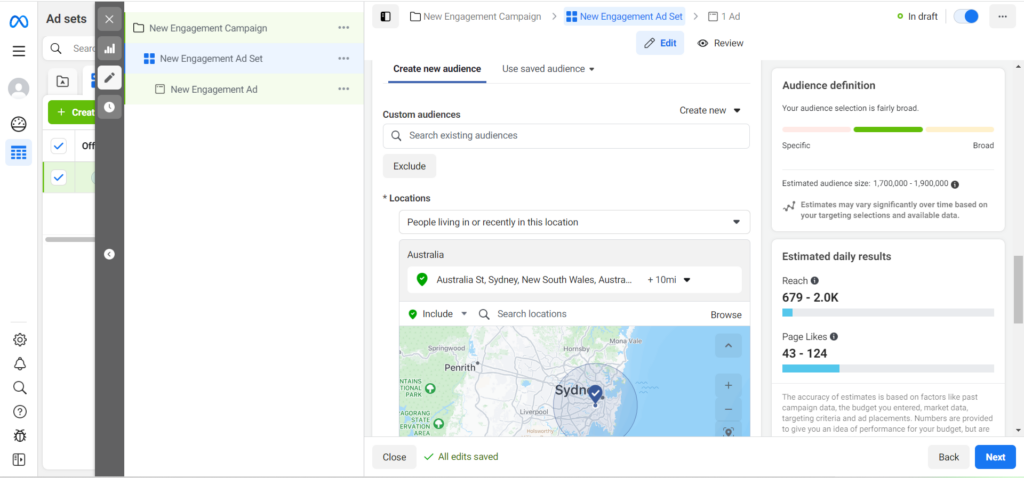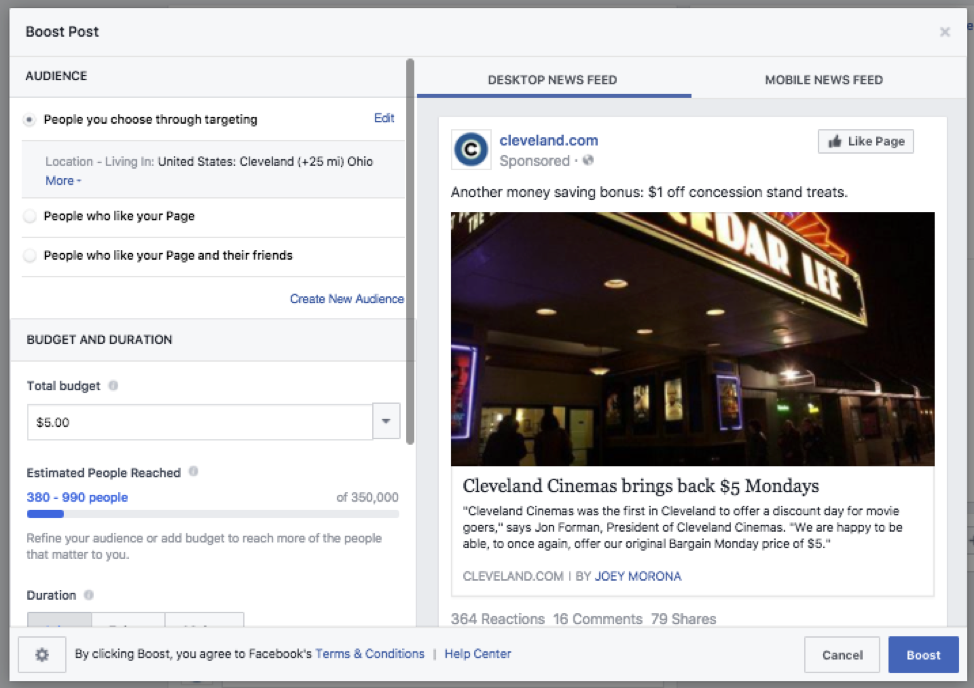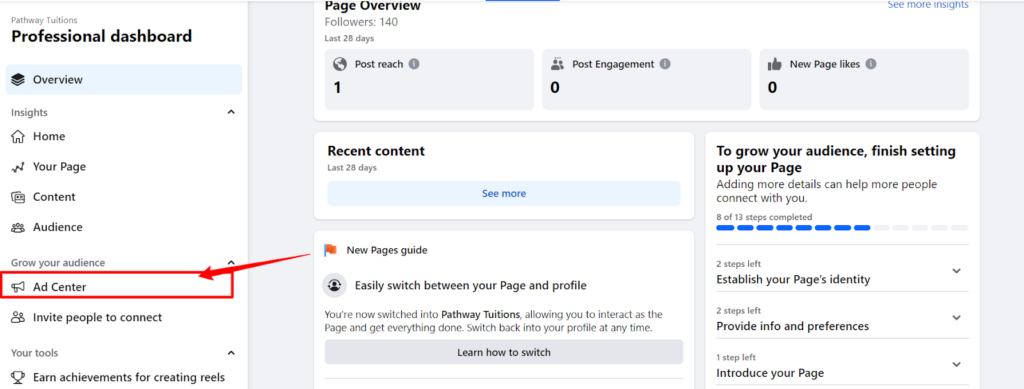How to do Facebook ads step by step

To optimize your advertising effectiveness and outperform your competitors, you need to build a truly effective advertising plan. In an increasingly large Facebook environment, asserting your position requires focus and a clear strategy. Creating a Facebook marketing plan is an indispensable step. Join RentFB to discover how to do Facebook ads step by step to achieve impressive results from the world’s largest social network.
What advertising methods does Facebook offer users?
Facebook offers a variety of advertising formats to help users and businesses optimize their marketing strategies. Here are some of the prominent advertising formats that Facebook offers:
- Facebook Leads Ads: This is an advertising format that allows users to sign up to receive information directly on the Facebook platform without having to be redirected to another page. This simplifies the process of collecting contact information from potential customers, increasing conversion rates and customer attraction efficiency.
- Carousel Ads: With this type of ad, businesses can showcase multiple products or services in a single ad. Carousel Ads allow users to scroll through images or videos of each product, providing an overview of the options, including images, product names, and prices. This is an effective way to showcase multiple products or services at once and increase customer reach.
- Boosted Page Posts: This allows you to select a post on your Facebook page and boost it for increased reach and engagement. You can set timing and visibility goals to ensure your post reaches your target audience. This is a quick way to increase attention and engagement on important posts.
- Dynamic Product Ads: These are automated ads that display relevant products or services based on a user’s search behavior and interests on Facebook. Dynamic ads use data from a user’s online behavior to recommend products that are most likely to appeal to them, driving conversions and sales.
- Feature Videos: Facebook allows businesses to post videos showcasing their products or services. These videos are typically high quality and are designed to increase brand awareness and capture consumer attention. They are a powerful tool for communicating your brand message and connecting with your customers.
- Event Responsive: Businesses can create and promote free events on Facebook, making it easy to promote their products or services. Organizing and promoting events on Facebook helps businesses increase their brand presence and attract customers to special events.
- Domain Ads: These ads link directly to your website, helping to direct users from Facebook to your website. This is an effective way to increase traffic to your website and improve conversion rates.
- Page Likes Ads: Facebook allows you to send invitations to personal accounts to like your page, increasing the number of followers and interactions with your page. This is a useful way to expand your potential customer base and increase brand awareness.

Thus, with the diverse advertising forms as above, Facebook offers many options suitable for each business’s goals and budget. Depending on your needs and marketing strategy, you can choose the appropriate advertising method to optimize the effectiveness of your campaign.
How to advertise on facebook step by step in the simplest way
To advertise simply and effectively, you should consider the following:
Step 1: Set advertising goals based on business goals
To build an effective online marketing plan on Facebook, the first step is to define specific goals for your target market. Setting clear goals helps you evaluate whether you are using Facebook correctly to achieve important business milestones.
Facebook advertising strategy goals should be realistic and clear, similar to setting other goals in your business. You need to identify important indicators to measure the effectiveness of your goals. For example, instead of just focusing on the number of followers or likes, you should focus on indicators such as the number of comments asking for product information, the number of messages asking for orders, or the conversion rate on the website.
Before setting goals for 2019, you should review all of your 2018 accomplishments. This will help you decide where to go with your Facebook marketing efforts. Here are three common marketing goals that top businesses use:
- Run brand awareness ads: The goal is to introduce and increase brand awareness through promotional video campaigns, providing useful information to attract public attention.
- Run ads to find potential customers: The goal is to attract interest in the business’s products or services, possibly through organizing events, contests on fanpages, and creating ads to collect customer information.
- Run ads to increase sales: The goal is to drive purchases by tracking ad views and interactions, creating ads with offers or coupons, and encouraging users to install your app or use your business’s services.
Step 2: Target the right audience
Facebook has a large user base, so identifying your target audience for your ads is important. There are three main types of Facebook audiences, each of which requires careful research and analysis to target accurately:
- Audience 1: Core Audience: This is an audience set up based on demographic criteria, including age, gender, location, and income. This information helps you better understand your customers and reach them more effectively.
- Audience 2: Custom Audience: This is a group of customers who have interacted with your business, such as people who have visited your website or are on your customer list. You can use these data sources to create advertising campaigns that target people who are already aware of your brand.
- Audience 3: Lookalike Audience: This is an audience that is similar to your current customer base. Facebook helps you create lookalike audiences based on criteria from your current customer base, to expand your reach to people with similar characteristics to your target customers.

Step 3: Set up a complete detailed plan
Every media channel needs its own content strategy, and Facebook offers a variety of content types such as Facebook Stories, live streams, videos, and more. To create effective content, you need to understand the content trends that your customers love and combine them with the value your business brings.
Avoid bombarding your customers with too much promotional content. Instead, create content that solves their problems or provides real value to them. According to a report from Sprout Social, 57.5% of social media users feel annoyed by seeing too much promotional content.
To choose the right content, you need to understand the types of content on Facebook and how to do it:
- Status: A simple yet highly effective form of content that keeps the message short and prominent.
- Images: Including images increases engagement. Invest in beautiful, evocative images.
- Video: Video is the most engaging content. Even though only 15% of videos on Facebook are listened to with full sound, video still generates awareness and engagement.
- Links: Use links to direct customers to your website or share valuable information.
- Facebook Live: Livestream provides high updates and helps customers interact directly with businesses.
Content planning helps you maintain the long-term effectiveness of your fanpage. Preparing a content calendar not only helps you avoid forgetting or missing content, but also provides an overview of the frequency and effectiveness of content over a period.
Step 4: Create a Facebook advertising strategy
Facebook advertising may be simple, but building an effective advertising strategy is not easy. With over 4 million advertisers on Facebook and an average CTR of only 10%, you need to invest time in developing your own unique advertising strategy.
Brand awareness enhancement goals
An advertising campaign should focus on two main elements:
- Cost effective
- Content Relevance
For beginners, allocating budgets by day, week, or month is an effective way to avoid waste. You should start by setting up small ad groups with low budgets to measure effectiveness before deciding to invest more.
Targeting also has a big impact on the effectiveness of your ads. It is important to understand your target audience and tailor your content to each customer group.
For example: If you have an advertising budget of 1 million VND per post, you should divide this budget into many small groups (adsets) with different target audiences, such as 5 adset groups, each group is 200,000 VND.
Create relevant content
When creating content, you need to stick to these key elements to ensure effectiveness and brand consistency:
- Brand recognition: Use a logo, brand name, or signature color to make it easy for customers to remember.
- Rewards: Provide value like a voucher, discount code, or reference to solve a customer problem.
- Tone: The tone of voice needs to be appropriate to the target audience and differentiate your fanpage.
- Call To Action: Identify the action you want your customers to take after reading your content.
- Contact information: Provide hotline number, registration form, or inbox for customers to easily contact.
Update and reuse advertising content
Ad copy can become boring if it appears over and over again. To avoid this, update and repurpose your ad copy regularly. The ultimate goal is to drive customers to your landing page to make a sale, collect data, or increase traffic. Investing in content always brings superior marketing results.
Step 5: Actively interact with customers
Social media, like a microcosm of society, requires interaction to work effectively. Don’t wait for customers to interact. Be proactive in connecting and encouraging customer engagement, as they may be busy and not always respond immediately.
Choose a time frame to post
Timing your posts is just as important. While you can’t completely master Facebook’s algorithm, you can determine the optimal time to post by experimenting and recording your results.
Studies show:
- Thursday and Friday are the best days to post on Facebook.
- The best time to post is at 1:00 p.m. to get the most Shares, and 3:00 p.m. to get the most Clicks (interactions).
According to statistics, 71% of Internet users access Facebook, of which 66% are male and 77% are female. In terms of age, 87% of Facebook users are between the ages of 18-29, and 73% are between the ages of 30-49.
Step 6: Tracking the effectiveness of advertising
Last but not least, a Facebook Marketing campaign needs to be analyzed in detail. With many different metrics on Facebook, you should focus on metrics that match your original goals to measure and evaluate the effectiveness of your advertising.
These are the steps to help you build a complete Facebook Marketing plan from A-Z. Depending on the industry and field you are operating in, the details in the plan may change. Keep monitoring and adjusting your plan, because no plan is perfect. Flexibility and regular updates to monitor the market will help you achieve excellent results in Facebook Marketing.
Contact Info
Information about “How to do Facebook ads step by step” hopes to provide you with additional necessary knowledge. At Rent FB, there is a team of highly qualified and experienced staff and experts who will provide rent facebook ads account as well as support when you run Facebook ads. Contact us via phone number.
Frequently Asked Questions
Để chạy quảng cáo Fanpage hiệu quả, trước tiên, bạn cần xác định rõ mục tiêu quảng cáo như tăng lượng tương tác, thu hút người theo dõi, hoặc thúc đẩy doanh số bán hàng. Sau đó, lựa chọn đối tượng mục tiêu chính xác dựa trên độ tuổi, giới tính, địa lý, và sở thích để quảng cáo của bạn tiếp cận đúng khách hàng tiềm năng. Nội dung quảng cáo cần sáng tạo, hấp dẫn và bám sát vào thông điệp thương hiệu, đồng thời sử dụng hình ảnh và video chất lượng cao để tăng cường sự thu hút. Cuối cùng, hãy theo dõi và phân tích hiệu quả của chiến dịch, điều chỉnh kịp thời dựa trên các chỉ số như tỷ lệ nhấp chuột (CTR) và chi phí trên mỗi hành động (CPA) để tối ưu hóa quảng cáo.
Để chạy quảng cáo ra đơn hiệu quả, đầu tiên bạn cần xác định rõ đối tượng khách hàng mục tiêu của mình, sau đó tạo nội dung quảng cáo hấp dẫn, nhấn mạnh vào giá trị và lợi ích sản phẩm mang lại. Tiếp theo, chọn nền tảng phù hợp và phân bổ ngân sách hợp lý, chạy thử các nhóm quảng cáo nhỏ để tối ưu hóa hiệu quả. Đừng quên theo dõi và phân tích các chỉ số quan trọng như tỷ lệ chuyển đổi, chi phí trên mỗi đơn hàng để điều chỉnh chiến lược kịp thời. Việc thường xuyên cập nhật nội dung và tái mục đích quảng cáo cũng là yếu tố quan trọng giúp duy trì sự thu hút của chiến dịch quảng cáo.